
Ethiopian panel IX May XIV, Fascist Era Mosaic, Italy
“This proclaims the conquest of Ethiopia – soldiers in the bottom left, soldiers as engineers in the center, a bulldozer to the right. Above, aerial assaults (weirdly combining airplanes with naturalistic eagles – the upper airplane has an eagle perched on its wing). Above and to the left of the inscription, an Ethiopian gives the fascist salute and a lion bows in submission. All very typical.” Source
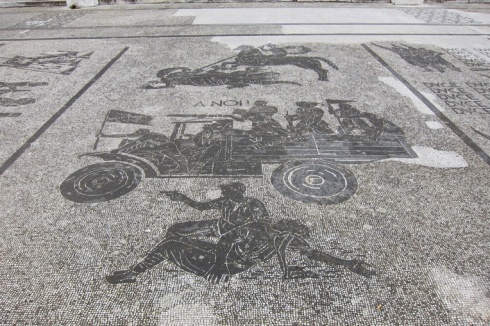
Squadristi Mosaic, Fascist Era Mosaic, Italy
“Top of mosaic: St George and the dragon. Bottom of mosaic: a Squadristi defending a fallen comrade. In the center, one of the trucks carrying Fascist Squadristi, the violent activists of the post-WWI years, into action. Mussolini tried to suppress the casual violence that brought him to power, but he never forgot it, and the Socialist Republic of Salo brought it all out again.” Source
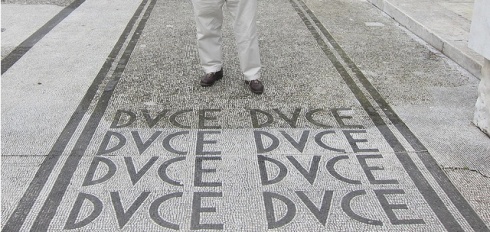
Palazzo Venezia, Fascist Era Mosaic, Italy
“You may call me “Dux.” This is what the crowd chanted to Mussolini while he stood on the balcony at the Palazzo Venezia — and being slightly weird Fascist art, of course they produce the banal repetition of DUCE DUCE DUCE quite literally.” Source
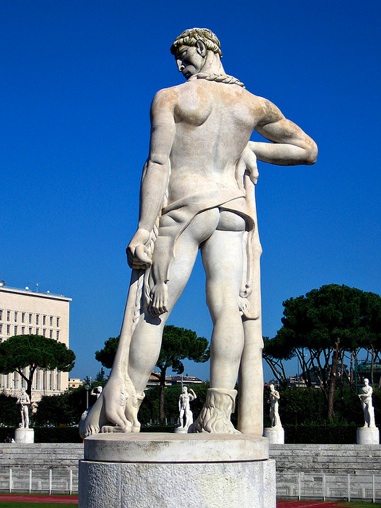
Stadio dei Marmi, Fascist Era Sculpture, Italy
One of the first statues to greet visitors to Mussolini’s 1932 sports arena, the Stadio dei Marmi, thrusts his buttocks at us challengingly. Source
 Mussolini purposely used designs that evoked the Roman Empire period to make Italians proud and back his own efforts to become a colonial power. (Photo by Anthony Majanlahti.) source
Mussolini purposely used designs that evoked the Roman Empire period to make Italians proud and back his own efforts to become a colonial power. (Photo by Anthony Majanlahti.) source
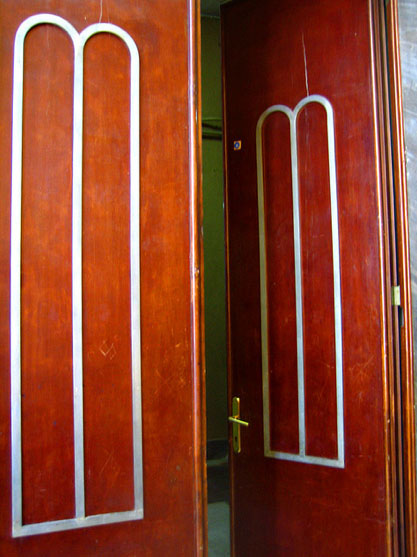
Mussolini’s Pool Doors
Doors in the Foro Italico pool complex all have this Mussolinian M on them, stylised but recognizable. source

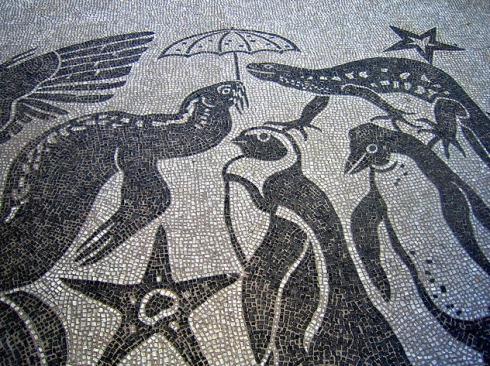 The bear is in a party hat! I had no idea that the Fascist dictatorship was so whimsical. These mosaics are on the floor of Mussolini’s private pool area. source
The bear is in a party hat! I had no idea that the Fascist dictatorship was so whimsical. These mosaics are on the floor of Mussolini’s private pool area. source
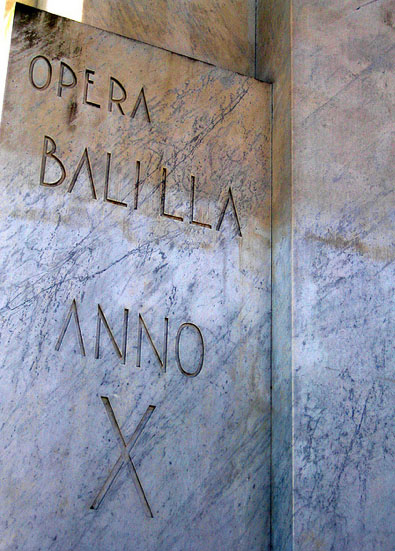
Work of the Balilla, the Italian Fascist Youth party, in the tenth year of the Fascist era (ie, 1932). The base of the Mussolini obelisk. Note the stylish capital A without the crossbar. source
Tags: Fascism, Italy, S.Cook










